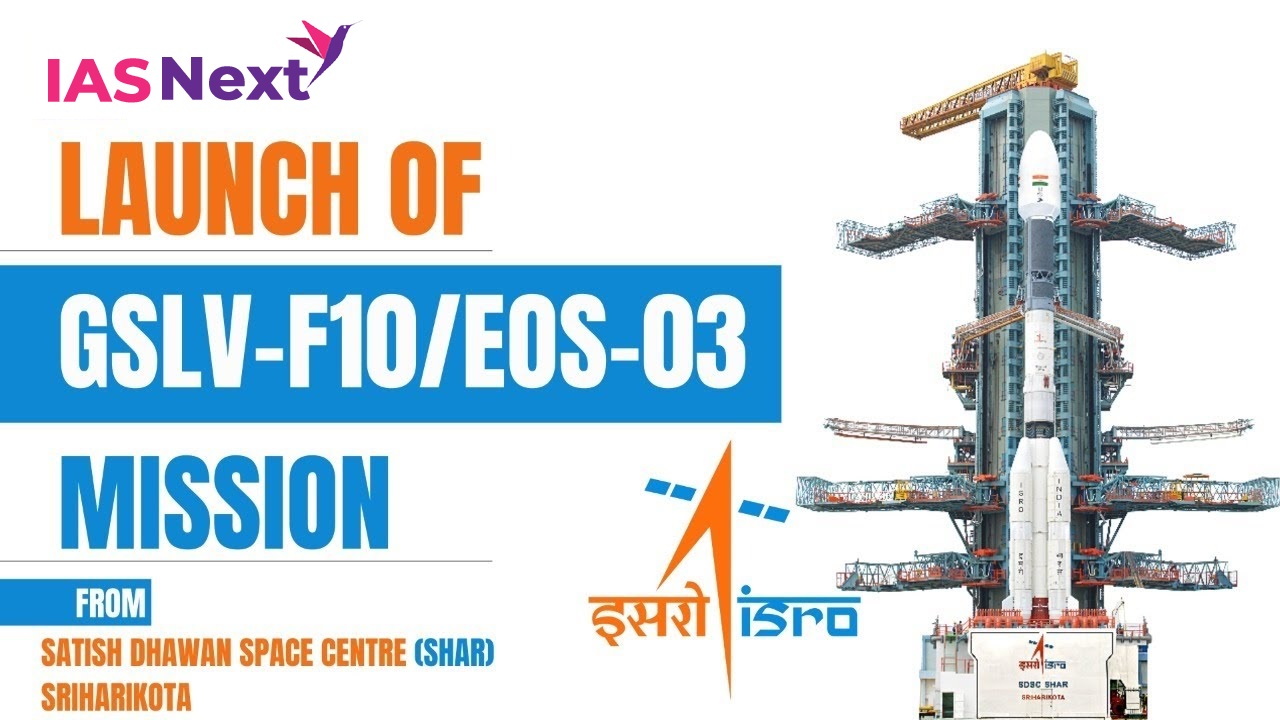CURRENT AFFAIRS
Get the most updated and recent current affair content on Padhaikaro.com
GSLV-F10 launch and EOS-03 satellite
- IAS NEXT, Lucknow
- 28, Mar 2022

Reference News:-
The GSLV-F10/EOS-03 mission, which lifted off from Sriharikota on August 12 last year failed due to ‘deviation in the performance’ of the cryogenic upper stage (CUS) of the launch vehicle, a national-level Failure Analysis Committee (FAC) constituted in the aftermath has found.
- GSLV-F10 was ISRO’s eighth flight with indigenous cryo, 14th GSLV flight and 79th launch from Sriharikota.
What is EOS-03?
- EOS-3 was the first state-of-art agile Earth Observation Satellite which would have been placed in a geo-synchronous orbit around the Earth.
- It was expected to provide near real-time imaging, which could be used for quick monitoring of natural disasters, episodic events and any short-term events.
- The mission life of the satellite was 10 years.
What is a GSLV Rocket?
- The GSLV expands to a geosynchronous satellite launch vehicle.
- The GSLV Mark II is the largest launch vehicle built by India.
- As its name suggests, it can launch satellites that will travel in orbits that are synchronous with the Earth’s orbit.
- These satellites can weigh up to 2,500 kg and are first launched into transfer orbits that have a distance from Earth of 170 km at closest approach and about 35,975 km at furthest approach which is close to the height of the geosynchronous orbit.
Difference between PSLV and GSLV:
India has two operational launchers- Polar Satellite Launch Vehicle (PSLV) and Geosynchronous Satellite Launch Vehicle (GSLV).
- PSLV was developed to launch low-Earth Orbit satellites into polar and sun synchronous orbits. It has since proved its versatility by launching geosynchronous, lunar and interplanetary spacecraft successfully.
- On the other hand, GSLV was developed to launch the heavier INSAT class of geosynchronous satellites into orbit. In its third and final stage, GSLV uses the indigenously developed cryogenic upper stage.
Geosynchronous vs Sun- synchronous:
- When satellites are about 36,000 km from the Earth’s surface, they enter what is called the high Earth orbit. Here, it orbits in sync with the Earth’s rotation, creating the impression that the satellite is stationary over a single longitude. Such a satellite is said to be geosynchronous.
- Just as the geosynchronous satellites have a sweet spot over the equator that allows them to stay over one spot on Earth, polar-orbiting satellites have a sweet spot that allows them to stay in one place. This orbit is a Sun-synchronous orbit, which means that whenever and wherever the satellite crosses the equator, the local solar time on the ground is always the same.